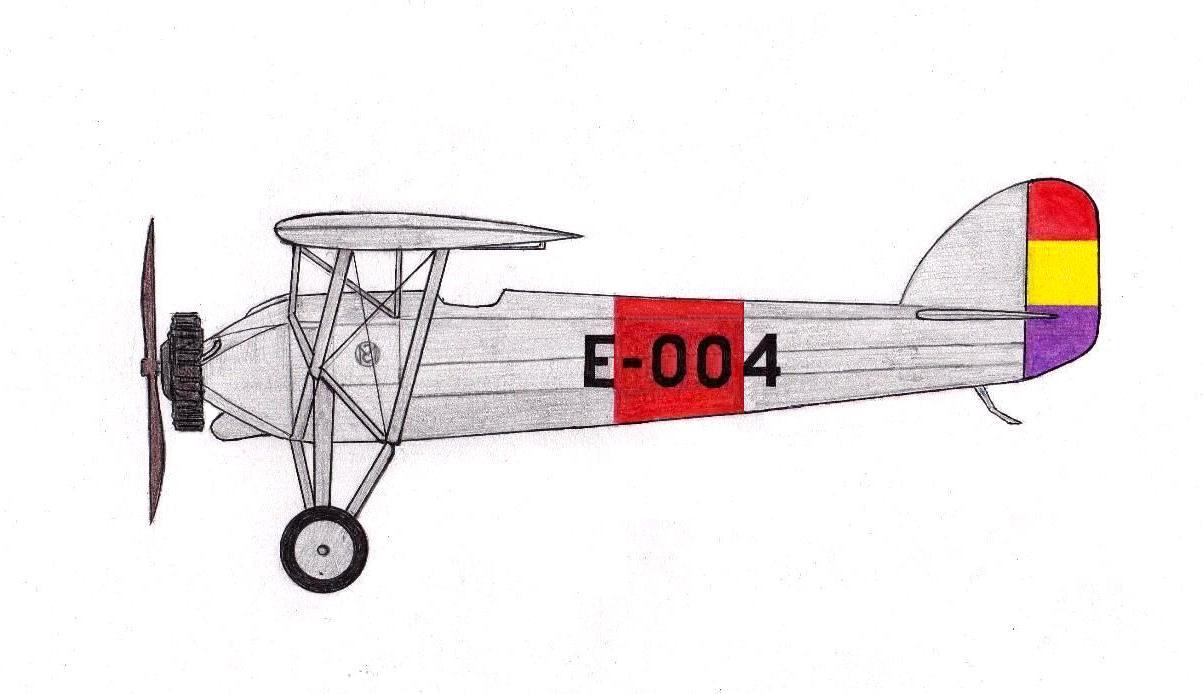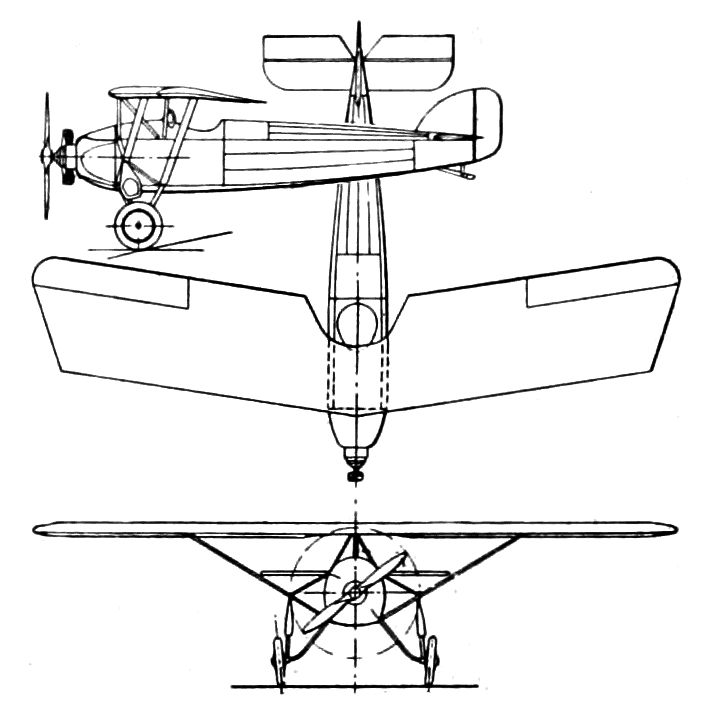Morane-Saulnier MS.180 on:
[Wikipedia]
[Google]
[Amazon]
The Morane-Saulnier MS.180 is a single engine, single
 ;
*
;
*

parasol wing
A monoplane is a fixed-wing aircraft configuration with a single mainplane, in contrast to a biplane or other types of multiplanes, which have multiple planes.
A monoplane has inherently the highest efficiency and lowest drag of any wing confi ...
aerobatic trainer designed in France
France (), officially the French Republic ( ), is a country primarily located in Western Europe. It also comprises of Overseas France, overseas regions and territories in the Americas and the Atlantic Ocean, Atlantic, Pacific Ocean, Pac ...
in 1929. About seventeen were produced and used in French flying clubs, some surviving World War II
World War II or the Second World War, often abbreviated as WWII or WW2, was a world war that lasted from 1939 to 1945. It involved the vast majority of the world's countries—including all of the great powers—forming two opposin ...
and one remaining in use at a club until the 1970s. Before World War II, some were used by Spanish Republican
The Spanish Republic (), commonly known as the Second Spanish Republic (), was the form of government in Spain from 1931 to 1939. The Republic was proclaimed on 14 April 1931, after the deposition of King Alfonso XIII, and was dissolved on 1 A ...
forces to train pilots in the Spanish Civil War
The Spanish Civil War ( es, Guerra Civil Española)) or The Revolution ( es, La Revolución, link=no) among Nationalists, the Fourth Carlist War ( es, Cuarta Guerra Carlista, link=no) among Carlists, and The Rebellion ( es, La Rebelión, lin ...
. Two MS.181s are still flying.
Design and development
Morane-Saulnier were well known for their series of parasol wing fighter aircraft. The MS.180 was in that tradition but was designed as an aerobatics trainer, a single seat near contemporary of the two seat but otherwise similar Morane-Saulnier MS.230, somewhat smaller and much lower powered. The aircraft is built from a mixture of wood and metal and, apart from the forwardfuselage
The fuselage (; from the French ''fuselé'' "spindle-shaped") is an aircraft's main body section. It holds crew, passengers, or cargo. In single-engine aircraft, it will usually contain an engine as well, although in some amphibious aircraft t ...
, is fabric covered. Its swept wing has metal spars and ailerons
An aileron (French for "little wing" or "fin") is a hinged flight control surface usually forming part of the trailing edge of each wing of a fixed-wing aircraft. Ailerons are used in pairs to control the aircraft in Flight dynamics, roll (or ...
but wooden ribs. It is carried over the fuselage on inverted V-form metal cabane struts and braced to the lower fuselage with parallel pairs of metal lift strut
In aeronautics, bracing comprises additional structural members which stiffen the functional airframe to give it rigidity and strength under load. Bracing may be applied both internally and externally, and may take the form of strut, which act in ...
s. The forward fuselage is metal framed and clad but structurally wooden aft. The cockpit is below the wing trailing edge
The trailing edge of an aerodynamic surface such as a wing is its rear edge, where the airflow separated by the leading edge meets.Crane, Dale: ''Dictionary of Aeronautical Terms, third edition'', page 521. Aviation Supplies & Academics, 1997. ...
, with a large cut-out for visibility. The tail unit is metal framed, with the tailplane
A tailplane, also known as a horizontal stabiliser, is a small lifting surface located on the tail (empennage) behind the main lifting surfaces of a fixed-wing aircraft as well as other non-fixed-wing aircraft such as helicopters and gyroplane ...
on top of the fuselage, The fin
A fin is a thin component or appendage attached to a larger body or structure. Fins typically function as foils that produce lift or thrust, or provide the ability to steer or stabilize motion while traveling in water, air, or other fluids. Fin ...
has a rounded leading edge
The leading edge of an airfoil surface such as a wing is its foremost edge and is therefore the part which first meets the oncoming air.Crane, Dale: ''Dictionary of Aeronautical Terms, third edition'', page 305. Aviation Supplies & Academics, ...
and the rudder
A rudder is a primary control surface used to steer a ship, boat, submarine, hovercraft, aircraft, or other vehicle that moves through a fluid medium (generally aircraft, air or watercraft, water). On an aircraft the rudder is used primarily to ...
extends to the bottom of the fuselage, moving between separate elevators
An elevator or lift is a cable-assisted, hydraulic cylinder-assisted, or roller-track assisted machine that vertically transports people or freight between floors, levels, or decks of a building, vessel, or other structure. They are ...
. The MS.180 ha a fixed, conventional undercarriage
Conventional landing gear, or tailwheel-type landing gear, is an aircraft undercarriage consisting of two main wheels forward of the center of gravity and a small wheel or skid to support the tail.Crane, Dale: ''Dictionary of Aeronautical Term ...
with single mainwheels mounted on V-form struts hinged to the lower fuselage. The shock absorber
A shock absorber or damper is a mechanical or hydraulic device designed to absorb and damp shock impulses. It does this by converting the kinetic energy of the shock into another form of energy (typically heat) which is then dissipated. Most sh ...
legs are near vertical and attached to the forward lift struts; these latter are further braced to the upper fuselage at the leg attachment points. A tailskid completes the landing gear.
The MS.180 first flew in 1929, powered by a 40 hp (30 kW) Salmson 9Ad 9-cylinder radial engine of 3.65 L (227 cu in) capacity. Later aircraft, designated MS.181, were powered by the larger capacity (5.1 L, 315 cu in) 60 hp (40 kW) Salmson 5Ac 5-cylinder radial. Reconstructions of the French civil aircraft register suggest that only one MS.180 was built and that later converted to the more powerful engine.
Operational history
In all, about 17 examples of the MS.180 and its variants were produced, mostly MS.181s. Fifteen MS.181s were owned by Compagnie Française d'Aviation and used in its flying schools from 1930. One was still flying with them in the 1970s. Four of them were acquired by the Republican air force in 1937 for pilot training early in the Spanish Civil War.Variants
;MS.180 *Prototype with 40 hp (30 kW) Salmson 9Ad 9-cylinder radial engine. One built, converted to MS.181. ;MS.181 *Production version with 60 hp (40 kW) Salmson 5Ac 5-cylinder radial engine. About 15 built. ;MS.185 *One built.Survivors
Two MS.180-series aircraft are still flying in France. MS.181 ''N304JX/F-AJXN'', previously atEAA AirVenture Oshkosh
EAA AirVenture Oshkosh (formerly the EAA Annual Convention and Fly-In), or just Oshkosh, is an annual air show and gathering of aviation enthusiasts held each summer at Wittman Regional Airport and adjacent Pioneer Airport in Oshkosh, Wisconsin ...
is privately owned. The MS.185 ''F-AZAZ'' is in the Amicale Jean-Baptiste Salis collection at Cerny and is also on display.
The Salis collection has another, non-flying MS.181, though it is not on general display. The Museo del Aire at Cuatro Vientos
Cuatro Vientos is a ward (''barrio'') of Madrid belonging to the district of Latina.
Geography
Cuatro Vientos is situated in the south-western area of central Madrid, close to the motorways A5 and M40 and to the homonymous airport.
External ...
near Madrid
Madrid ( , ) is the capital and most populous city of Spain. The city has almost 3.4 million inhabitants and a metropolitan area population of approximately 6.7 million. It is the second-largest city in the European Union (EU), and ...
displays a non-flying MS.181 marked up in Spanish Republican Air Force
The Spanish Republican Air Force was the air arm of the Armed Forces of the Second Spanish Republic, the legally established government of Spain between 1931 and 1939.
Initially divided into two branches: Military Aeronautics ('' Aeronáutica M ...
colours.
Operators
 ;
*
;
*Spanish Republican Air Force
The Spanish Republican Air Force was the air arm of the Armed Forces of the Second Spanish Republic, the legally established government of Spain between 1931 and 1939.
Initially divided into two branches: Military Aeronautics ('' Aeronáutica M ...
Specifications (MS.180)

See also
References
Further reading
*External links
* {{Aerobatics MS.180 Aerobatic aircraft